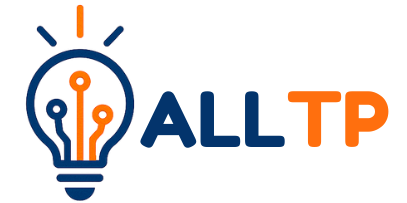In today’s digital-driven world, coding has become an essential literacy for the 21st century, much like reading and writing. It empowers learners to understand, create, and innovate in a technology-first environment, ensuring they can shape, not just consume, the tools of modern life.
All Things Programming (ALLTP) is a key player in Coding Kenya, leading this mission in Kenya and beyond by offering affordable, high-quality programs, free teacher training, multiple real-world projects, and opportunities for international hackathons and travel.
ALLTP blends global exposure with local relevance, giving young learners both the skills and the confidence to thrive in an ever-evolving digital world.
Globally, schools are integrating coding into their curricula to build logical thinking, creativity, and problem-solving skills, while preparing students for careers that demand digital expertise. For developing nations, early coding education is key to closing the tech skills gap and unlocking economic opportunities.to code, they are trained to approach challenges logically, breaking them down into smaller.
Below are the 7 benefits of teaching coding in primary and secondary schools;
1. Enhances Problem-Solving and Critical Thinking Skills
Coding is more than typing lines of code, it’s a structured way of thinking. When students learn manageable steps. This “divide and conquer” mindset is the same problem-solving process used by engineers, scientists, and innovators worldwide.
For example, creating a simple mobile game requires students to:
- Identify the game’s goal and rules.
- Break the gameplay into separate actions (moving characters, scoring points, ending the game).
- Write code for each action and test it.
- Debug errors until the game runs smoothly.
These logical, step-by-step skills apply beyond the computer screen, whether solving a complex math problem, organizing a school event, or troubleshooting everyday issues like fixing a broken device. By practicing coding regularly, students naturally strengthen their ability to think critically, analyze situations, and design effective solutions.
2. Boosts Creativity and Innovation
Coding is not just about rules and logic , it’s also an open canvas for imagination. When students design games, animations, or mobile apps, they are essentially bringing ideas to life through technology. This process allows them to experiment, take risks, and see their unique visions transformed into interactive experiences.
For example, a student might code a math game that helps classmates practice multiplication in a fun way, or create an animated story to share a cultural folktale with a global audience. In each case, they’re blending technical skills with personal creativity to produce something original and meaningful.
Introducing coding from a young age nurtures a mindset where students view challenges as opportunities to invent solutions. Over time, they gain the confidence to innovate, not just in technology, but in art, business, science, and everyday problem-solving.
3. Prepares Students for the Future Job Market
The world of work is changing rapidly, and digital skills are now in demand across almost every profession. From engineering to healthcare, finance to agriculture, the ability to understand and work with technology is no longer optional, it’s essential. Coding sits at the heart of this shift, enabling individuals to automate tasks, analyze data, and develop innovative solutions.
Learning to code in primary and secondary school gives students a significant head start. Even if they don’t become professional programmers, coding builds problem-solving and technical thinking that can be applied in careers such as graphic design, digital marketing, architecture, research, robotics, and beyond.
For example, a farmer using automated irrigation systems, a doctor interpreting AI-driven diagnostic tools, or a designer creating interactive websites all benefit from an understanding of how software works.
4. Encourages Collaboration and Teamwork
Coding is often portrayed as a solitary activity, but in reality, it thrives on collaboration. Most software projects require people with different skills, from coders and designers to project managers and testers, working together to achieve a shared goal. In the classroom, group coding projects help students learn how to communicate ideas clearly, divide responsibilities, and support one another’s strengths.
All Things Programming (ALLTP) takes this collaborative learning to the next level through its hands-on, real-world approach:
- Hackathons & International Travel: ALLTP hosts both local and international hackathons, giving students the chance to team up with peers from different schools, regions, and even countries. These events challenge learners to solve global problems under time pressure, fostering teamwork, cultural exchange, and creative problem-solving.
- Multiple Projects Approach: Students don’t just work on a single assignment, they tackle multiple, diverse projects over time. This teaches them to adapt to new challenges, work with various team dynamics, and contribute meaningfully in different contexts.
- Affordable Opportunities: ATP ensures these collaborative experiences are within reach for all students, removing financial barriers so that talent and passion, not income, determine participation.
5. Builds Confidence and Resilience
Coding teaches one of life’s most valuable lessons: success often comes after multiple failures. When students write code, it rarely works perfectly the first time. They must debug, test, and adjust their work repeatedly, a process that naturally builds persistence and patience.
This trial-and-error approach mirrors real-life challenges, where solutions are rarely instant. As students overcome coding errors and see their projects finally come to life, they gain a sense of achievement that boosts their self-esteem. Each successful program reinforces the idea that obstacles are simply opportunities to learn and improve.
Moreover, working through setbacks in coding makes learners more adaptable. They become comfortable experimenting, taking calculated risks, and embracing mistakes as part of the learning journey.
6. Produces “Full-Baked” Students Ready for Higher Education and Careers
In the context of education, “full-baked” students are those who graduate with more than just technical skills. They are confident, adaptable problem-solvers with a strong portfolio of projects, ready to thrive in higher education or the workplace. These students understand how to apply their knowledge in real-world scenarios, communicate effectively, and work collaboratively, all essential traits for long-term success.
All Things Programming (ALLTP) plays a pivotal role in producing such well-rounded graduates through:
- Quality Programs: ALLTP offers a curriculum tailored for different age groups, built on industry best practices.
- Free Teacher Training: By equipping teachers with practical coding skills, ALLTP ensures that even schools in resource-limited areas can deliver high-quality coding education.
- International Exposure: ALLTP provides exceptional opportunities for students to travel abroad for hackathons, allowing them to collaborate on a global stage and sharpen their competitive edge.
7. Makes Learning Fun and Engaging
One of the biggest advantages of teaching coding in schools is how naturally it lends itself to interactive, hands-on learning. Through gamified coding platforms, students can solve puzzles, build animations, or create mini-games that instantly bring their code to life. This immediate feedback makes learning exciting and keeps students eager to explore more.
Real-world applications further enhance engagement. Whether it’s developing a website for a school club, programming a simple robot, or creating an app to solve a local problem, students see the direct impact of their work. This relevance sustains motivation and helps them connect classroom learning to the wider world.
Conclusion
Teaching coding in primary and secondary schools is no longer a futuristic idea; it’s an urgent priority. From boosting problem-solving skills to preparing students for the job market, fostering collaboration, and making learning fun, coding equips young people to thrive in a fast-changing world.
For most learners, the journey starts with coding for beginners programs, which are simple, engaging activities that build a strong foundation for future skills. Starting early makes it easier for students to progress to advanced, real-world applications with confidence.
All Things Programming (ALLTP) is making this possible by providing affordable access, high-quality programs, free teacher training, multiple projects, and opportunities for international hackathons and travel. With these resources, students from all backgrounds can gain the skills, confidence, and global perspective needed to succeed.




